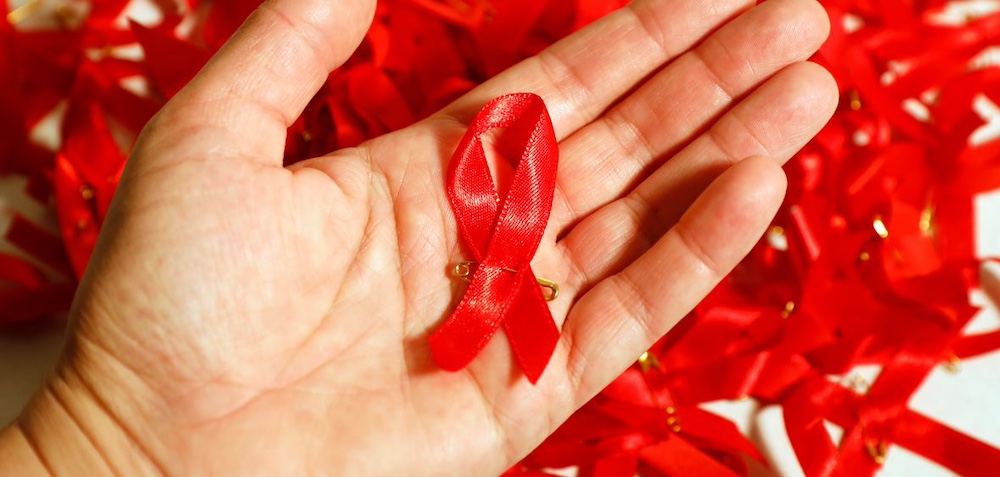
Caution urged in Queensland HIV notification “spike” response

RECENT reports of a “dramatic spike” in HIV notifications in Queensland have prompted experts to urge caution about misinterpreting results and jumping to conclusions, instead suggesting while there are worrying trends, the increase could be a positive sign.
Media reports late last month focused on the release of data indicating that HIV notifications had increased to 93 cases, compared to 69 at the same time last year — a rise of 34 per cent.
The data indicating this increase in notifications came from the Queensland Health Statewide Weekly Communicable Diseases Surveillance Report, which contains data on notifiable conditions from each hospital and health service in Queensland.
Some headlines and references to the story spoke of “dramatic spikes”, “alarming” results and one media outlet wrote: “HIV WARNING: Silent killer on the rise again”.
Pointing to a significant rollout of rapid HIV testing throughout the state, HIV Foundation Queensland (HIVFQ) chair Dr Darren Russell said that health authorities were anticipating a rise and that things were not as negative as they seemed.
“The Foundation and the Department of Health have made significant and unprecedented investment in Queensland to promote and increase access to HIV testing amongst high-risk populations,” Dr Russell told the Star Observer.
“HIVFQ expects to see a rise in notifications as a result of campaigns and initiatives firmly focussed on increasing testing of HIV amongst at-risk populations.
“[The data] does not necessarily equate to increases in new infections, but rather it may be that more cases of HIV have been discovered. This is incredibly positive because early detection of HIV means people living with HIV can start treatment earlier for improved individual health benefits and well-being.”
Speaking to the ABC, another member of HIVFQ, Dr Andrew Redmond, said that this data was only provisional and it will become more reliable by the end of the year. He also said that more targeted testing of “high risk” people might have contributed to the notification rise.
“We’re really trying to test people who are of high risk of HIV, and it’s certainly possible that if we’re going to test people of high risk, we’re going to get more positive tests or it might be the rates are just really going up.” Redmond said.
However, there are trends on the rise in Queensland that are of concern to HIV experts and organisations across the state.
Further recent data provided by the 2013 Gay Periodic Health Survey by the Kirby Institute had the highest ever-recorded amount of unprotected anal intercourse with a casual partner (UAIC) in the survey’s history.
Dr Russell admits that the high rates of UAIC may also be contributing to the rise in notifications and that combating an increasing amount of complacency within gay men and men who have sex with men (MSM) is a major priority.
“Well publicised advances with HIV treatment and other medical breakthroughs may lead to increasing levels of complacency when it comes to safe sex as there is not the same level of fear surrounding HIV that there once was,” Russell said.
“This may be contributing to an increase in UAIC amongst those that believe HIV is no longer a risk worth avoiding and that receiving HIV treatment means they no longer need to use condoms.”
On whether there is a correlation between the high rates of UAIC and 34 per cent increase in notifications, Russell said: “While it is too early to attribute the rise to specific factors now, the HIV notification data is currently being investigated internally to identify risk and other factors to establish if the new diagnoses in Queensland are indeed new infections or if they are people who have not tested before or for some time.
“It does not necessarily equate to increases in infections, but that more cases were discovered earlier than what they normally would have. Early detection means early access to treatment. This is key to improving the individual health of people living with HIV and also for preventing the onward transmission.”
Queensland AIDS Council (QuAC) executive director John Mikelsons said that while the new data is only provisional, it was clear that older safe sex messages were not as effective as they used to be.
“QuAC would prefer to look at trends rather than part-year figures, and we know that the trajectory in HIV diagnoses is up, and that the safe sex message is not as effective as it used to be,” he told the Star Observer.
“I think that increased testing could play a role, but I also think there are behavioural impacts at play here, too. We have seen sex without condoms with casual partners increase significantly in Queensland in the last two years, and we are now unfortunately leading the nation in that area.
“Gay men have been bombarded with safe sex messaging for years, so we cant just trot out any old finger-wagging safe sex campaign and expect it to work. We need to ensure that the message is effective, and that we talk with gay men about these issues using a voice they know and trust, without blaming them for increases.”
HIV expert Dr Wendell Rosevear expressed concern over the scaling back of HIV testing services at the Brisbane Sexual Health Clinic, ‘Biala’, and urged government departments and bodies to work together with community peer health groups to share and exchange information and strategies.
He also pleaded for gay men and MSM to “value each other and link prevention to valuing each other.”
“We must address the reality that with the Internet and amphetamine use, many people have multiple partners and high-risk sex with pressure against condom using sex. Denial of risk can be attractive but is dangerous,” Rosevear told the Star Observer.
“No one deserves HIV and information alone is not used unless people value themselves. We must affirm valuing people in ending discrimination, prejudice and homophobia and support trust-based relationships that include honesty and testing if we really want to prevent HIV and other STDs increasing.”
Rosevear also highlighted a significant increase in the number of his patients presenting syphilis, chlamydia and gonorrhoea as a clear indication that UAIC is becoming an issue.
Russell said that the HIVFQ was “firmly” focused on eliminating HIV as well as promoting and improving access to HIV testing for at-risk and isolated populations by removing barriers, and that these preliminary results needed time to be properly understood.











It has been proven time and time again that bans on gay marriage, the Liberal party governments cutting and slashing funding by up to 67% to HIV organisations and high rates of homophobia are all three well linked to higher and higher cases of HIV infection rates within Australian society over the past 30 years!
The solution is to allow gay marriage within Australia and fully restore funding to HIV organisations now!